I thought maybe this one would get squeezed into the main story somehow, but both it and the "power board" seem to be worthy of their own entries... Building an internal battery box for this has become much more than originally envisioned somehow, even though there has been no "feature creep" to speak of...

The choice to go internal was a difficult one but is well in motion now, and the result is an aluminum angle reinforced 5/8" 5 ply wooden box that is slowly evolving into being what it needs to be...
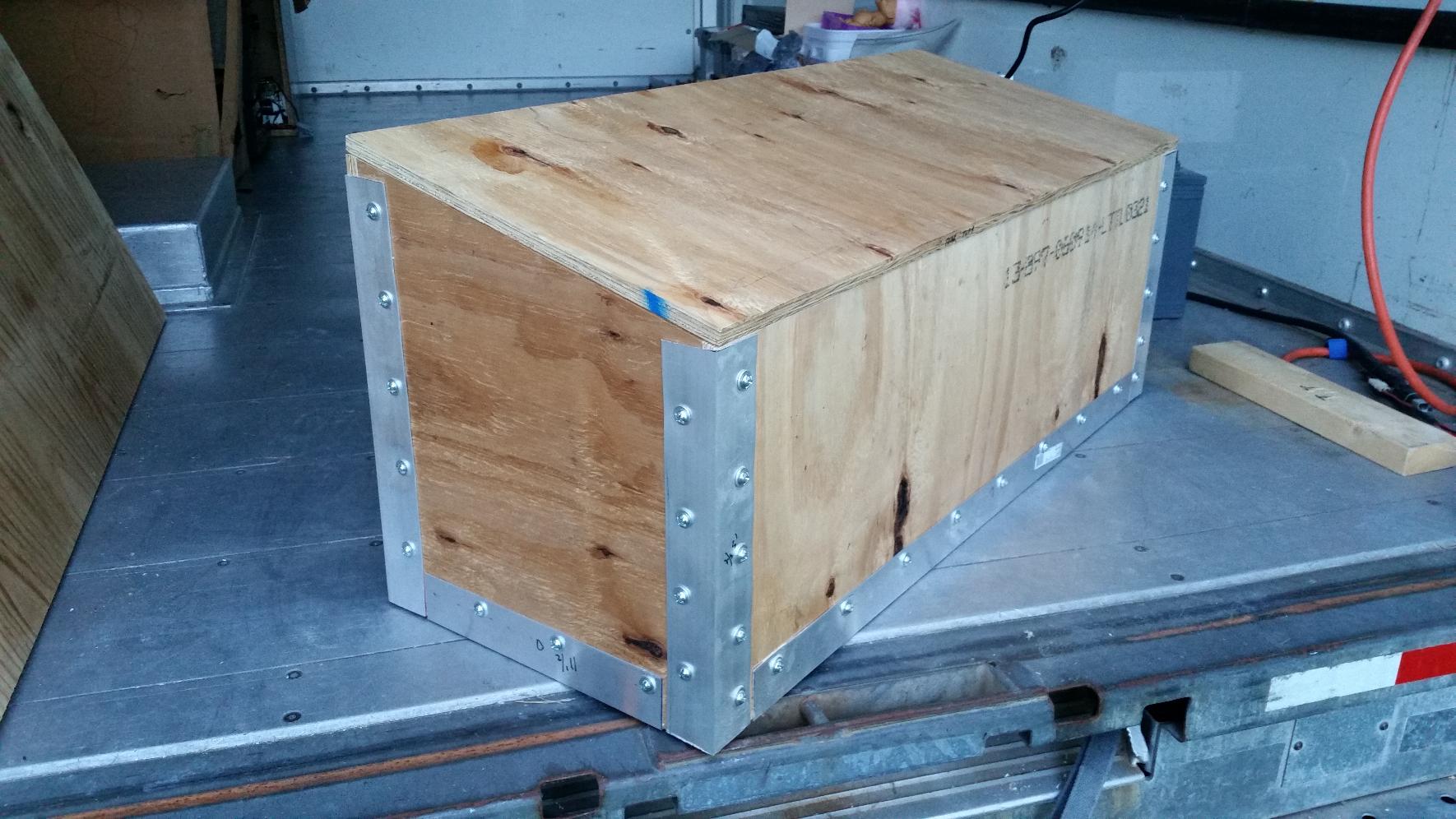
Here it is as it presently sits.. Not really much to look at... slopes up toward the hydrogen vent plumbing, and designed to stay together as much as a box with it's construction and intent may be able to in the event the unspeakable happens. More on that in a few. The lid will be removable for maintenance, and will incorporate a few tricks to assist with any aforementioned disaster, should one strike.
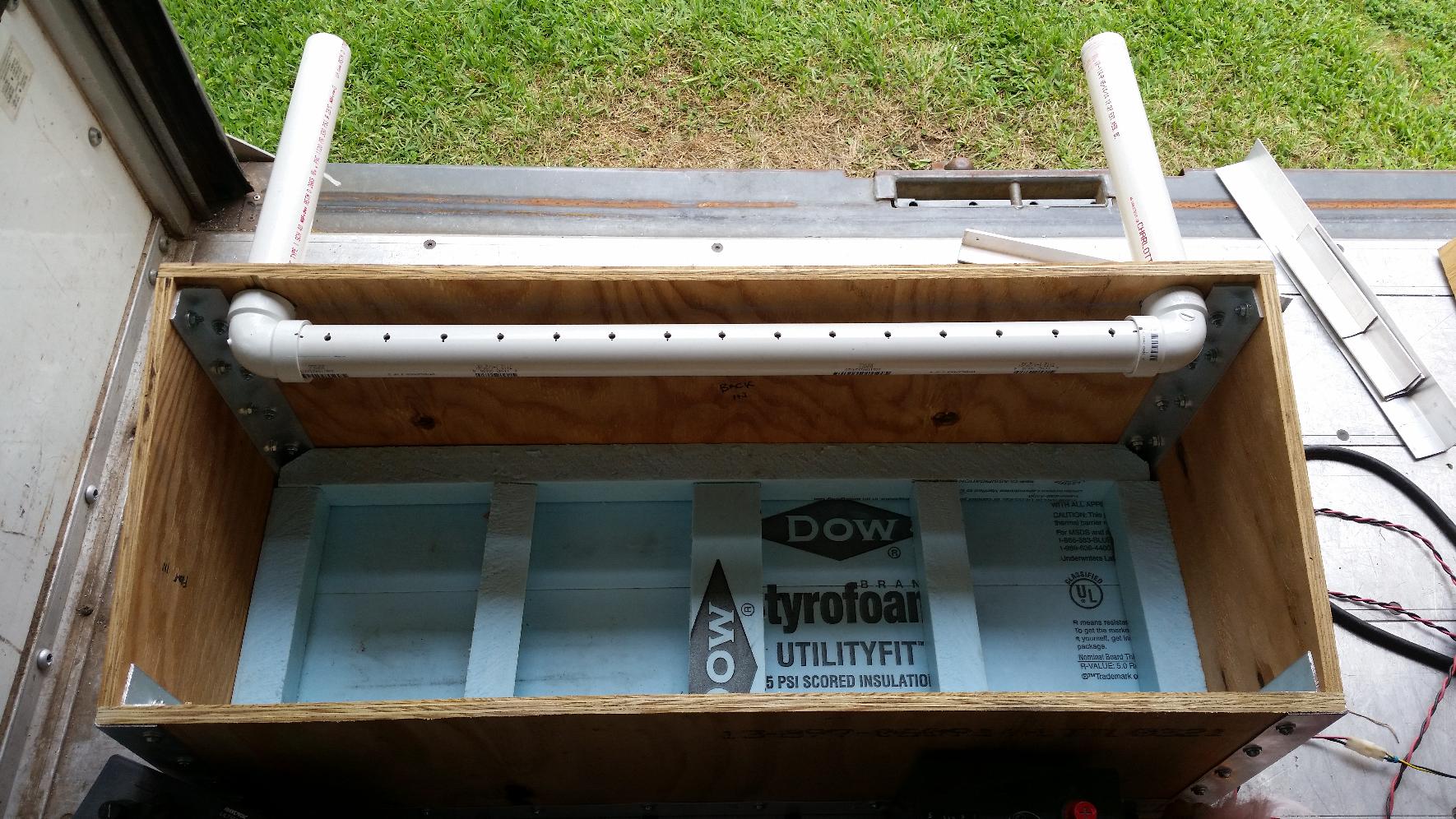
Here's a shot illustrating the position and configuration of the hydrogen vent, as well as the allocation foam that will help keep the individual batteries in something resembling a uniform environment/configuration. Also visible is the interior angle that's bolted to the outer which forms the braces. The bottom is done in a manner very similar to the sides, although the *actual* bottom does not yet have any holes/bolts. This is mainly because the exact anchoring scheme isn't 100% figured out yet, but I'm pondering it rather intently.
Fair enough, no? Well, holding with the "let's keep it together no matter what" concept, there was a hurdle to be dealt with involving the lid. It needs to be able to be opened every couple months or so at the very least for water, and any other maintenance that may need to be performed. Yet, it needs to be able to contain an explosion...
I was originally thinking some kind of compression fit yet "breakable" design, so that if gases suddenly needed to escape, that's what would let go, allowing any spilled acid and shrapnel to be contained in the box (yes, I'm dealing with the concept that wood is porous and has small cracks at the joints as well, but for now...)
This wasn't really ideal for a few reasons... One, it left the lid vulnerable. There wasn't a dirt simple way to make it removable and reinforce it at the same time. Second, it involved trying to coordinate the tensioning devices so that they could absorb/relieve/mitigate the energy that would be present and pop open uniformly instead of buckling and/or peeling back like a banana. Third, any maintenance operation for any reason whatsoever meant resetting everything every time. I was prepared to deal with it until a more viable solution came from a conversation in IRC (thanks Addie!), which I adjusted slightly and came up with this:
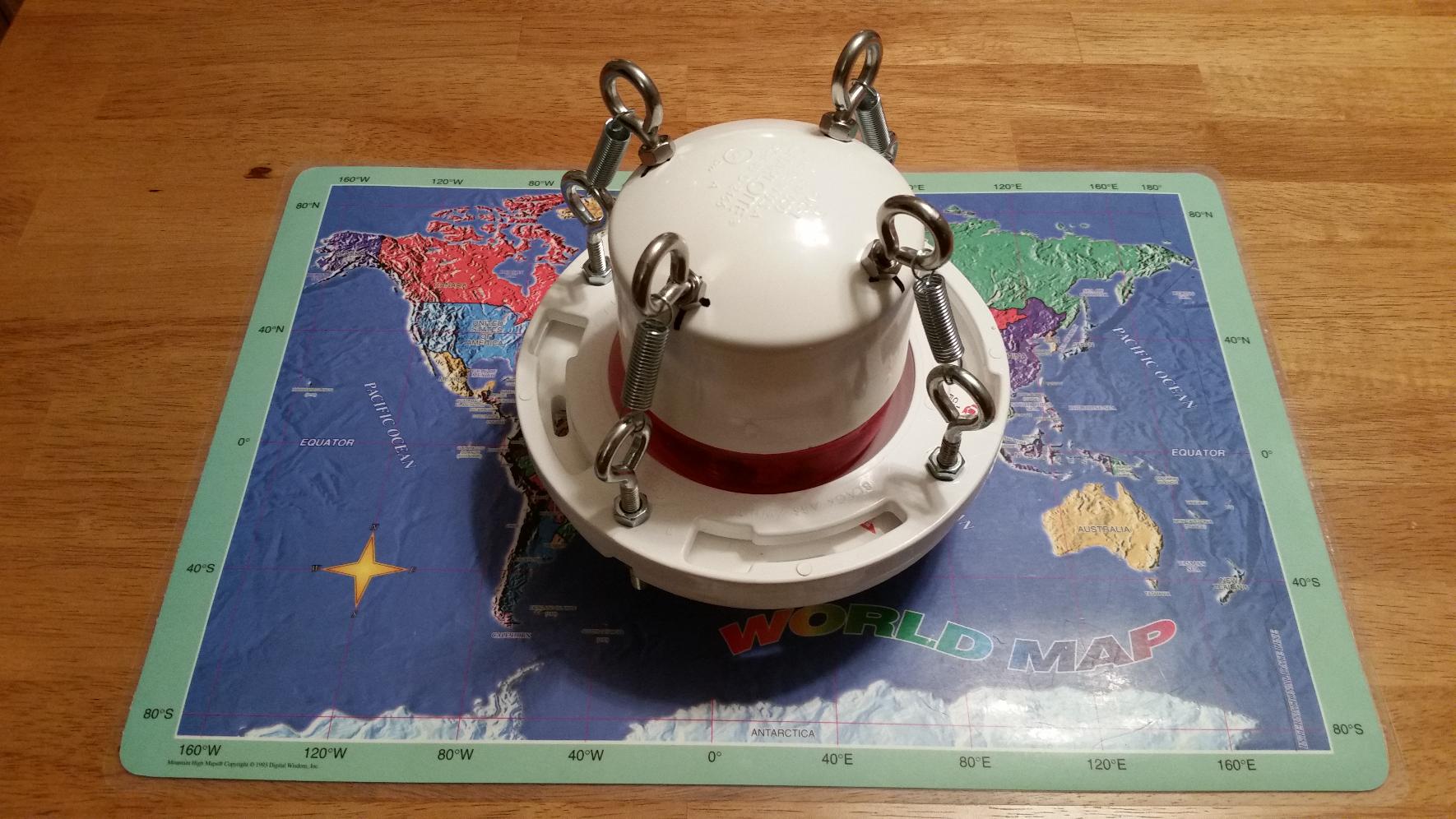
It's a self-resetting emergency vent valve made from a 3" toilet flange, a rubber ball, a 3" PVC cap, some eye bolts, and 4 springs. It's not quite complete as pictured in these shots, as I intend to have large zip ties act as travel stops (to keep it from breaking completely free and becoming it's own projectile) and likely some form of inverted bucket (with venting) to help trap any acid spray that may be present during a release.
Some more shots of it:
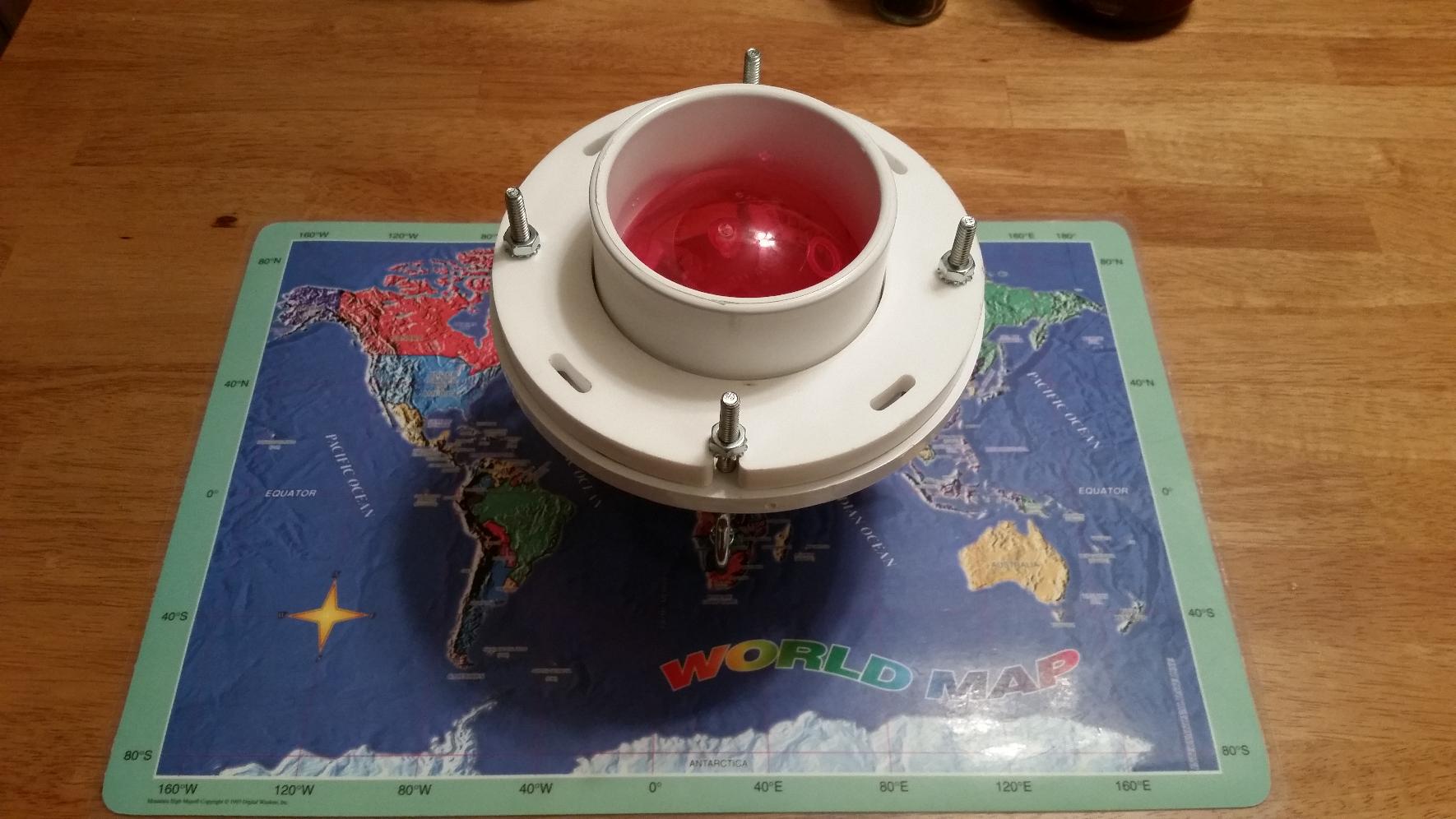
The underbelly
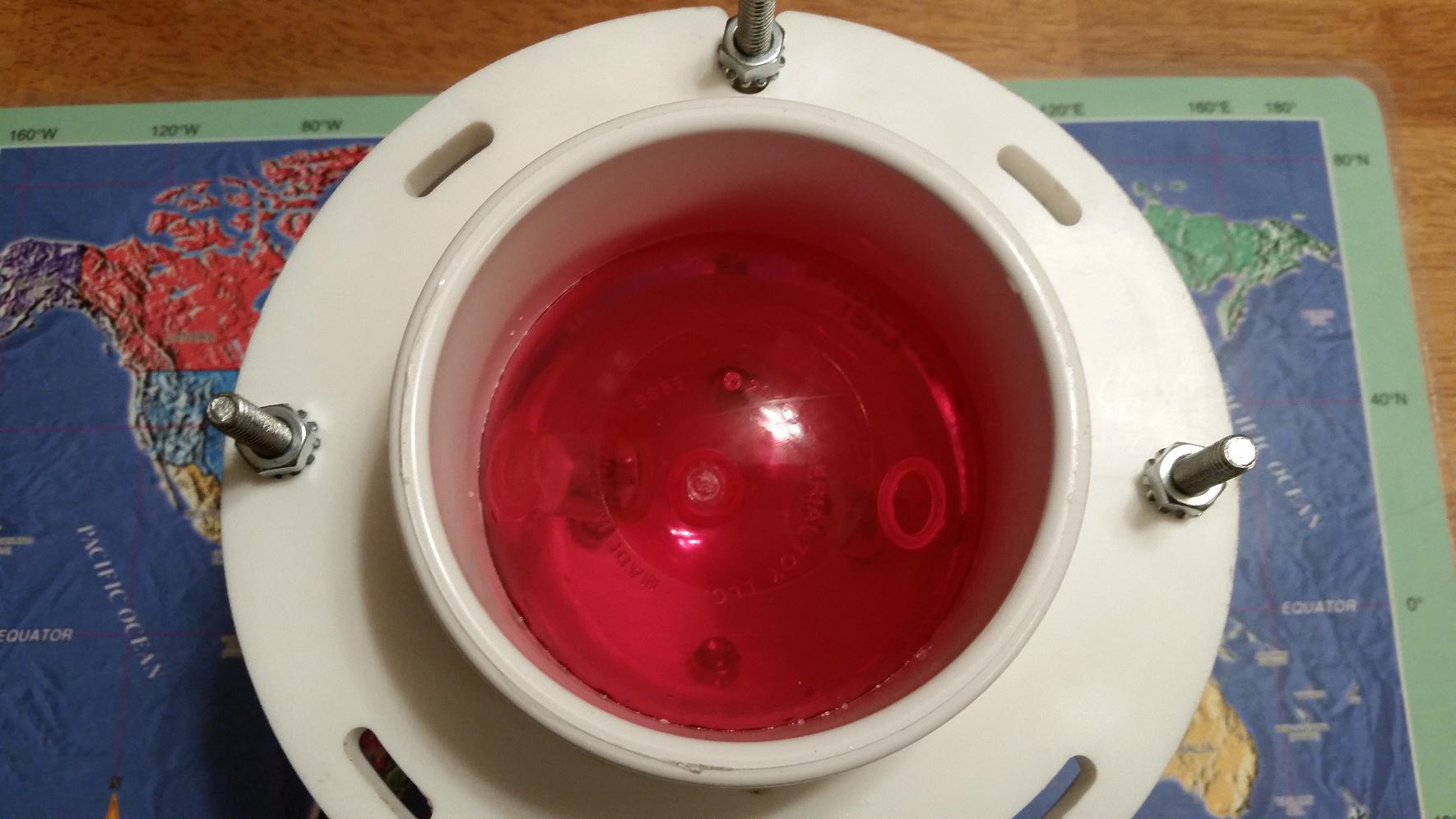
Close up of the underbelly
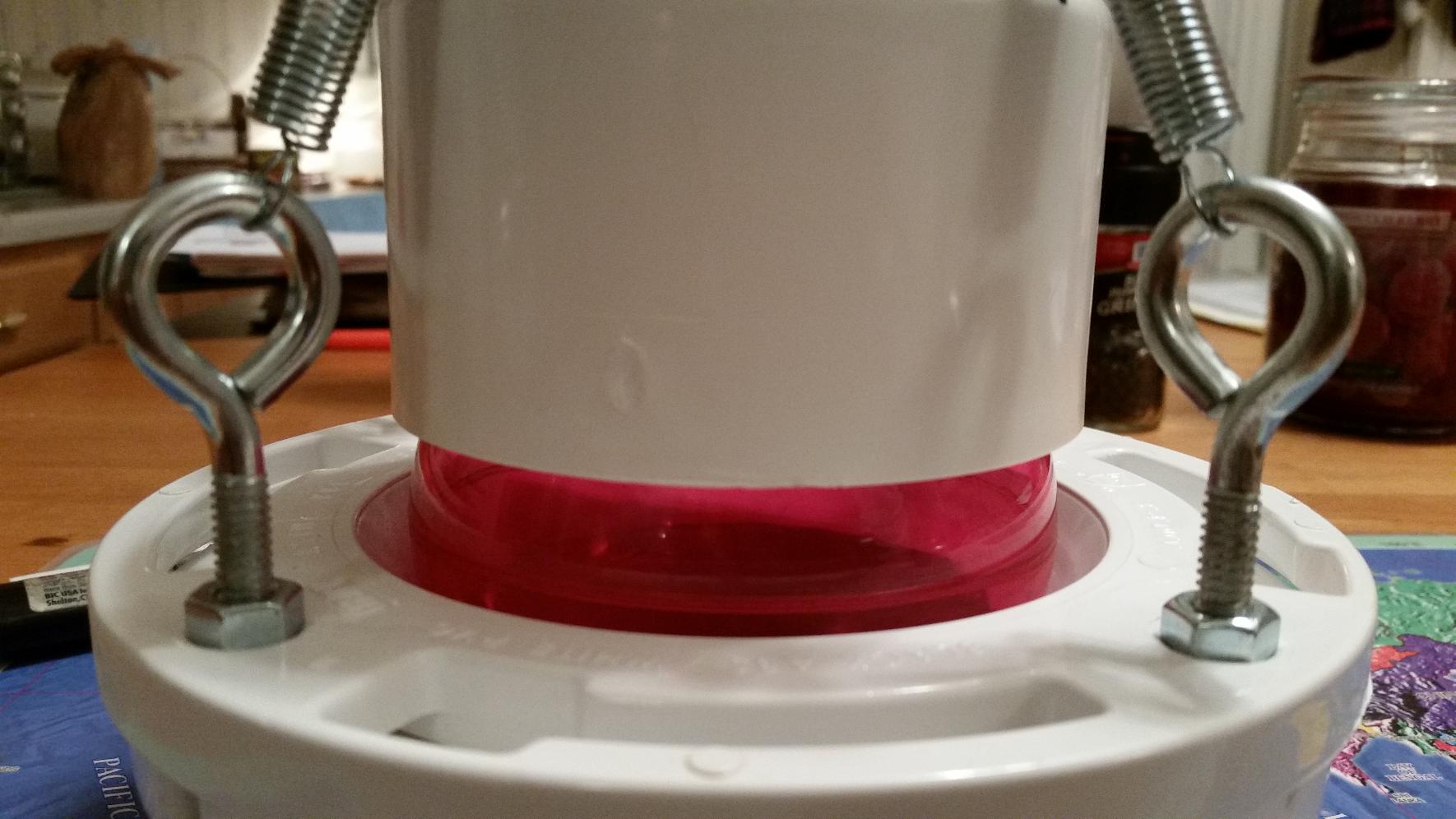
Close up of the mating section
Whether or not this thing is truly capable of what it's designed to do is an unknown, and quite honestly, I hope it stays that way. I have no intentions of staging any tests for it to see how it actually performs. Responsible behavior or borderline criminally insane, I'll let you be the judge. But I don't have the funds to replace everything if it doesn't work, and quite frankly, don't have the nerves to do the test if I did. If anyone wants to build one and test it, by all means, but if you want to hear any results from me, let's just say you'd have to be one sick individual

Actual mounting location on the lid is still kinda up in the air... I'd like some feedback from you guys on what you think might be best. I can rule out a few locations simply due to space constraints - the "lower" half of the lid is pretty much out. I'd like to avoid using the sides as well (of the box, not the lid), although there may be some benefit I'm not currently seeing to putting it there. Original "on-paper" thinking was in the center, but then I got to pondering it, this might be the worst possible location - the center of the lid is likely to flex the most as is, and even though there is a reinforcement ring that goes behind the device on the inside and some adhesive involved, a hole is a hole and will only weaken things, regardless.
Thoughts?
Steve